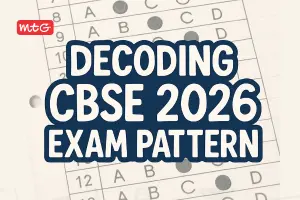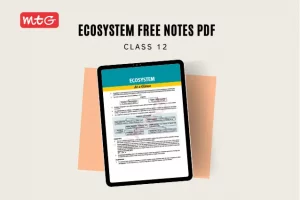
NCERT class 6 mathematics chapter 11 – “Algebra” teaches the use of letters to write rules and formulas in a general way. By using letters, we can talk about any number and not just a particular number. Students should practice multiple-choice questions (MCQs) to prepare for the objective questions that will be asked in the CBSE exams. For the CBSE exams, practice multiple-choice questions (MCQs) to prepare for the objective questions. We have offered Class 6 MCQ Questions on “Algebra” apart from offering comprehensive explanations. On many occasions, CBSE highlighted the role of MCQs as they play a major role in understanding the concepts thoroughly.
MCQs are quite different from subjective questions. Therefore, students should practice and understand how to find right answers in the MCQs. To revise the main concepts, students should practice all the MCQs with answers given. This will assist them in familiarizing with the kinds of questions that might appear in the board exams.
Previous – Mensuration Class 6 MCQS With Answers
Check the updated Syllabus – CBSE Class 6 Maths Syllabus 2024-25
Topics covered in “Algebra”
- Matchstick Patterns
- The Idea of a Variable
- Use of Variables in Common Rules
- Rules from Geometry
- Rules from Arithmetic
- Commutativity of Addition of Two Numbers
- Commutativity of Multiplication of Numbers
- Distributivity of Numbers
- Associativity of Addition of Numbers
- Expressions with Variables
- What is an Equation
- Solution of an Equation
- Trial and error method
- Beginning of Algebra
Check complete class 6 Maths MCQ – Class 6 Mathematics MCQs with Answers
CBSE Class 6 Mathematics Algebra MCQs – PDF Download
Answers –
Summary for NCERT class 6 mathematics chapter 11 – “Algebra”
- The number of times a given shape is repeated varies; it takes on values 1,2,3,… . It is a variable, denoted by some letter like n
- A variable takes on different values, its value is not fixed
- The length of a square can have any value. It is a variable.
- But the number of angles of a triangle has a fixed value 3. It is not a variable.
- We may use any letter n, l, m, p, x, y, z, etc. to show a variable.
- A variable allows us to express relations in any practical situation.
- Variables are numbers, although their value is not fixed. We can do the operations of addition, subtraction, multiplication and division on them just as in the case of fixed numbers.
- Variables allow us to express many common rules in both geometry and arithmetic in a general way.
- An equation is a condition on a variable. It is expressed by saying that an expression with a variable is equal to a fixed number
- An equation has two sides, LHS and RHS, between them is the equal (=) sign.
- The LHS of an equation is equal to its RHS only for a definite value of the variable in the equation.
- We say that this definite value of the variable satisfies the equation. This value itself is called the solution of the equation.
- For getting the solution of an equation, one method is the trial and error method. In this method, we give some value to the variable and check whether it satisfies the equation. We go on giving this way different values to the variable` until we find the right value which satisfies the equation






























